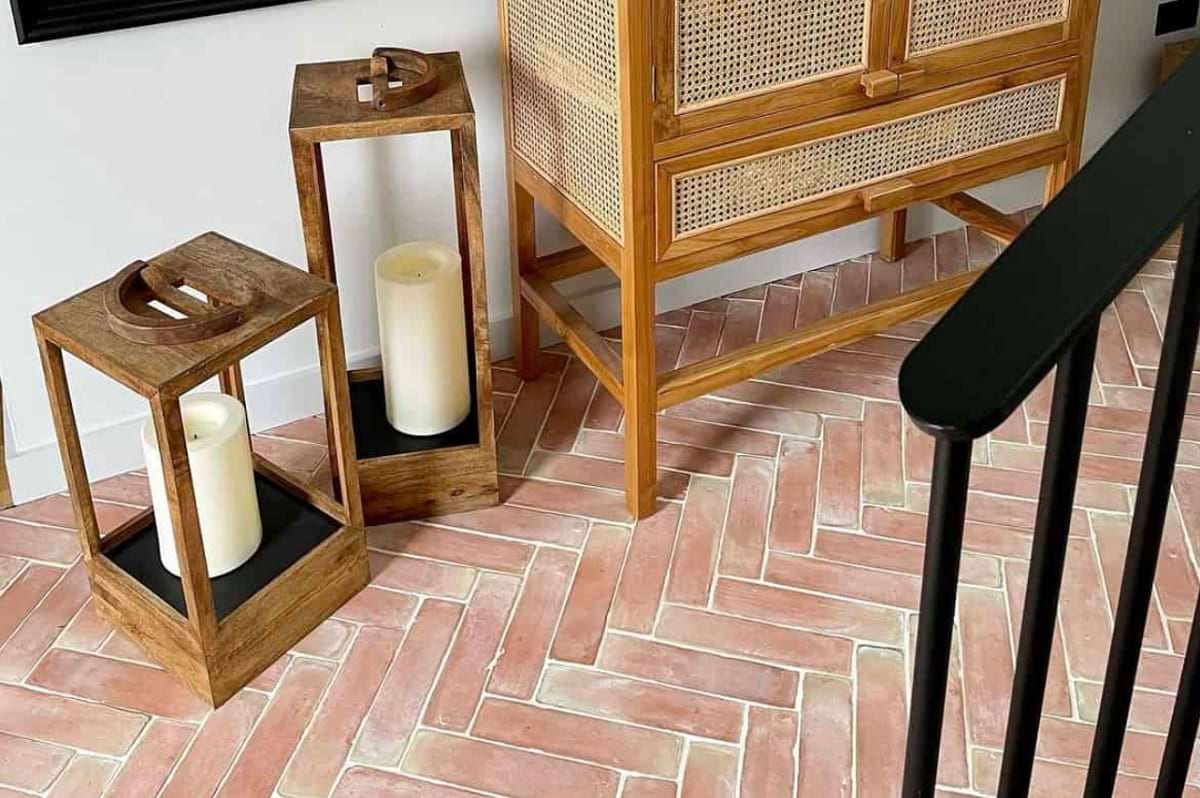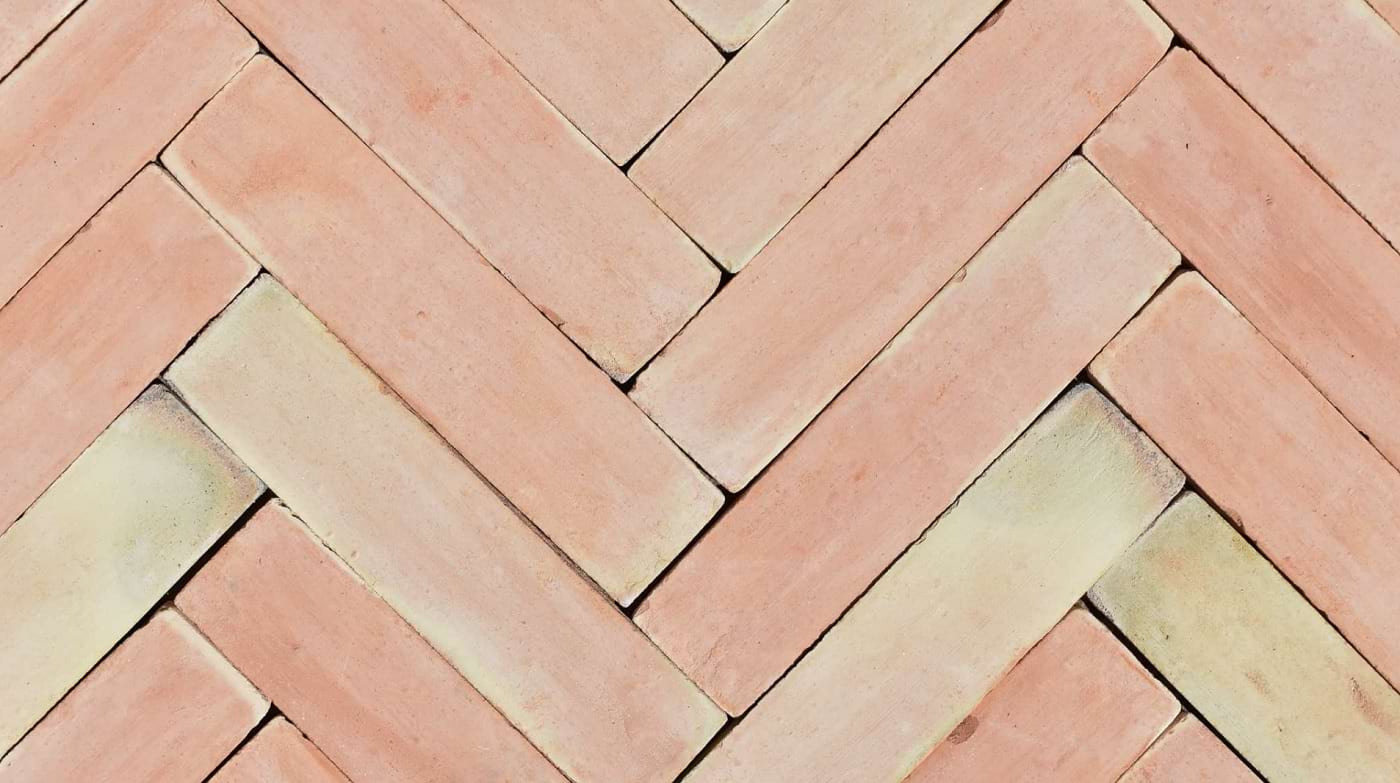Terracotta, derived from the Italian words “terra” (earth) and “cotta” (baked), is a type of earthenware made from natural clay. The production process begins with sourcing high-quality clay, often from riverbeds or natural deposits. The clay is then refined to remove any impurities and achieve the desired consistency. This purified clay is the foundation of terracotta’s enduring quality and durability.
The refined clay is then shaped into tiles using traditional methods. For handmade terracotta tiles, artisans often use wooden molds to form each tile, ensuring a unique, handcrafted quality. The tiles are left to dry naturally, which can take several days. This slow drying process is crucial to prevent cracking and to prepare the tiles for the next stage.
Firing the tiles: a dance with fire
Once the tiles are thoroughly dried, they are fired in a kiln at temperatures ranging from 1,000 to 1,200 degrees Celsius. This high-temperature firing transforms the clay into a hard, durable material capable of withstanding various environmental conditions. The firing process also imparts the characteristic warm, earthy tones that terracotta is known for, ranging from rich reds to warm browns, depending on the mineral content of the clay.
The kiln-firing stage is both an art and a science. Skilled artisans carefully control the temperature and atmosphere within the kiln to ensure each tile reaches its optimal strength and color. This meticulous process is what gives handmade terracotta tiles their distinct, timeless appeal.

The appeal of brick-like terracotta
One of the most popular styles of terracotta tiles is the brick-like appearance, which mimics the look of traditional brickwork. These tiles are often used for flooring and wall cladding, providing a rustic, classic aesthetic that complements various architectural styles. The brick-like terracotta tiles are particularly favored in Mediterranean, Southwestern, and rustic design schemes, where they add a touch of warmth and authenticity.
These tiles can be laid in various patterns, such as herringbone or basket weave, to create visually interesting surfaces. The versatility in design makes brick-like terracotta tiles a popular choice for both interior and exterior applications, including patios, kitchens, and living areas.
Handmade terracotta tiles – durability and resilience
Terracotta tiles are renowned for their durability and resistance to environmental factors. They are highly resistant to water, making them suitable for areas exposed to moisture, such as bathrooms and kitchens. The natural porosity of terracotta allows it to breathe, reducing the risk of moisture buildup and related issues like mold or mildew.
In addition to water resistance, terracotta tiles are also known for their ability to withstand freezing temperatures. This makes them an excellent choice for outdoor use in climates with seasonal temperature fluctuations. When properly sealed, terracotta tiles can endure harsh weather conditions while maintaining their structural integrity and aesthetic appeal.

The timeless charm of handmade terracotta tiles
Handmade terracotta tiles offer a unique blend of tradition and beauty that machine-made alternatives often lack. Each tile carries the imprint of the artisan’s hand, resulting in slight variations in size, shape, and color. These imperfections add to the charm and character of handmade tiles, making each installation truly one-of-a-kind.
Choosing handmade terracotta tiles is a nod to classical architectural styles and a commitment to craftsmanship. These tiles seamlessly blend with historical and traditional design elements, creating spaces that exude warmth and timeless elegance. Whether used in a rustic farmhouse, a Mediterranean villa, or a modern home seeking a touch of classic charm, handmade terracotta tiles are a versatile and enduring choice.
Handmade terracotta tiles are more than just a flooring or wall covering option; they are a piece of art crafted from the earth. The intricate process of creating these tiles, from sourcing and refining the clay to shaping, drying, and firing, results in a product that is both beautiful and durable. Their appeal lies in their natural, earthy tones, resilience, and the unique touch of craftsmanship that each tile carries. For those looking to add a touch of timeless elegance and authenticity to their spaces, handmade terracotta tiles are an exceptional choice.
Author Profile
Latest entries
 LogisticsApril 30, 2025Revolutionizing Pharmaceutical Shipping with Innovative Solutions
LogisticsApril 30, 2025Revolutionizing Pharmaceutical Shipping with Innovative Solutions Business & FinanceMarch 31, 2025Payment Processing Solutions: The Key to Seamless Online Transactions
Business & FinanceMarch 31, 2025Payment Processing Solutions: The Key to Seamless Online Transactions Health & BeautyMarch 28, 2025The Importance of an Air Pollution Map in Modern Environmental Monitoring
Health & BeautyMarch 28, 2025The Importance of an Air Pollution Map in Modern Environmental Monitoring Health & BeautyFebruary 27, 2025Air Pollution Map: Understanding the Global Challenge
Health & BeautyFebruary 27, 2025Air Pollution Map: Understanding the Global Challenge




